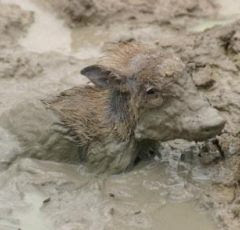 No one's really sure how long ago humans recognized the winter solstice and began heralding it as a turning point, the day that marks the return of the sun. The Mesopotamians were first perhaps, with a 12-day festival of renewal, designed to help the god Marduk tame the monsters of chaos for one more year. Almost every ancient culture built their greatest architectures - tombs, temples, cairns and sacred observatories - so that they aligned with the solstices and equinoxes. Many of us know that Stonehenge is a perfect marker of both solstices.
No one's really sure how long ago humans recognized the winter solstice and began heralding it as a turning point, the day that marks the return of the sun. The Mesopotamians were first perhaps, with a 12-day festival of renewal, designed to help the god Marduk tame the monsters of chaos for one more year. Almost every ancient culture built their greatest architectures - tombs, temples, cairns and sacred observatories - so that they aligned with the solstices and equinoxes. Many of us know that Stonehenge is a perfect marker of both solstices.In pre-historic times, winter was a very difficult time for Aboriginal people in the northern latitudes. The growing season had ended and the tribe had to live off of stored food and whatever animals they could catch. The people would be troubled as the life-giving sun sank lower in the sky each noon. They feared that it would eventually disappear and leave them in permanent darkness and extreme cold. After the winter solstice, they would have reason to celebrate as they saw the sun rising and strengthening once more. Although many months of cold weather remained before spring, they took heart that the return of the warm season was inevitable. The concept of birth and or death/rebirth became associated with the winter solstice.
The rising of the sun
The running of the deer,
The playing of the drum,
Sweet music to the ear.
December celebrations in many faiths and locations - ancient and modern


